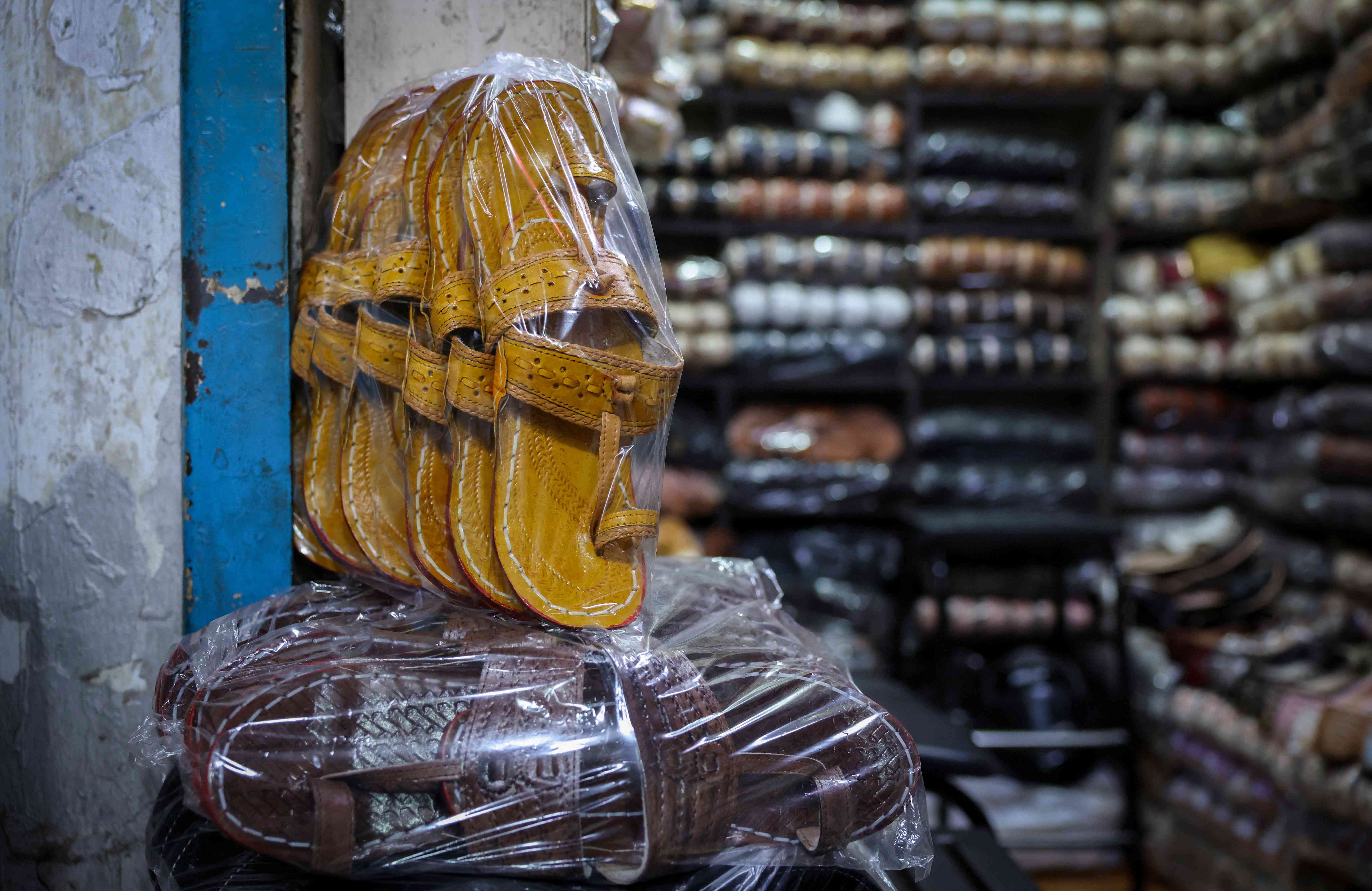Earlier this month, Italian fashion house Prada sparked an uproar in India when its newest collection at the Milan Fashion Week featured open-toe leather sandals that strongly resembled the iconic Kolhapuri chappal.
Priced at Rs 1.2 lakh per pair, nearly 300 times their value in Kolhapur, these sandals were showcased by Prada without any mention of their cultural origins or the communities in the subcontinent that have sustained the industry around them.
Since 2019, the Kolhapuri chappal has had geographical indication status – meaning that it is protected by an intellectual property rights regime that acknowledges that goods originating from a specific region possess a reputation and distinctive qualities or characteristics inherently linked to that location.
A GI tag is a legal stamp that protects the cultural and economic identity of products from a certain place, such as champagne from France or Darjeeling tea from India.
The Prada incident put the focus on the limitations of India’s GI regime in enforcing the protection of its heritage when it was co-opted on the global stage.
For decades, India’s intellectual property trajectory in the cultural sector has been one of seeking recognition: mapping traditional knowledge systems, celebrating heritage crafts and filing for geographical indications with the hope that a legal tag would be enough to protect them.
But recognition is not the same as enforcement.

GI status legally identifies a product as originating from a specific region, and grants exclusive rights to local artisans, manufacturers, or registered associations in that region to use its name.
It stops others from misusing the region-based name and lets authentic producers benefit from both cultural identity and direct income.
The backlash in India against Prada’s sandals accused the firm of cultural appropriation and theft of intellectual property. Yet, legally, the anger went nowhere.
A public interest litigation before the Bombay High Court seeking an injunction against Prada was dismissed, largely on procedural grounds: the petitioners were not the registered GI proprietors and public interest was not adequately demonstrated.
This signals the limitations of enforcing India’s GI regime. Until now, GI registration has been celebrated as an end in itself, as a badge of honour that marks cultural uniqueness.
But what happens when that uniqueness is exploited abroad, stripped of context and sold back to the world as high fashion? The case of the Kolhapuri chappal may be the first real test of how GI protection needs to evolve beyond domestic pride.
GI tags
In India, GIs are governed by the Geographical Indications of Goods (Registration and Protection) Act, 1999, which came into force in 2003 following India’s commitments under the Trade-Related Aspects of Intellectual Property Rights agreement.
GI protection allows local artisans, manufacturers, and registered associations to register traditional products and prevent others from using the GI name without authorisation.
Since the inception of the GI regime, over 400 Indian products have been registered: from Banarasi and Pochampally ikat saris and Mysore silk, to Nagaland’s Naga mircha chilli, Kullu shawls and Aranmula Kannadi metal mirrors from Kerala.
These registrations confer exclusive rights to artisans, manufacturers, artisans and officially recognised producer associations based in those regions to produce, market, and financially benefit from the GI-labelled goods.
For instance, Basmati rice, one of India’s leading GI products, generated export earnings of approximately Rs 38,000 crore in the financial year 2022-’23, showcasing the immense commercial potential of GI recognition.

Core flaw
Under the Geographical Indications of Goods (Registration and Protection) Act, enforcement hinges on the use of the GI name itself or instances of consumer confusion. Prada did neither. It did not market its sandals as Kolhapuris nor did it mislead its customer base about the product’s origin.
The company sidestepped the law’s textual boundaries, while arguably trampling on its spirit.
That highlights a core flaw in India’s GI law: it was not framed to address subtle, stylised forms of imitation in transnational fashion circuits.
This is not the first time Indian culture has been borrowed without acknowledgement. In 2018, for instance, Indian design studio People Tree said French fashion house Christian Dior had copied one of its prints.
Similarly, H&M’s “Wanderlust” collection, created in collaboration with Indian designer Sabyasachi Mukherjee, was claimed to have used GI-tagged hand-block prints without involving or compensating the artisan communities responsible for them.
But two elements make the Kolhapuri chappal episode stand out. First, it comes at a time when Indian policymakers are actively promoting GIs as tools of rural empowerment and soft power diplomacy.
Second, its unusual aftermath: Prada, after facing public backlash, agreed to a collaborative, artisan-driven “Made in India” collection. What the law could not compel, public pressure did.
This unintended consequence, where a luxury brand voluntarily enters into a fair-trade collaboration, is worth reflecting on. It suggests that while legal enforcement may have failed, ethical compliance may still be a possibility.
However, such goodwill cannot be the cornerstone of a country’s intellectual property regime.
There is an urgent need to reimagine GI protection through the lens of global commerce. This could include bilateral agreements that create binding obligations on GI, mandatory disclosure of origin clauses in fashion exports and soft law instruments under the United Nations Educational, Scientific and Cultural Organisation and or the World Intellectual Property Organization that link heritage usage to benefit-sharing norms.
The Prada controversy exposes another persistent weakness in India’s GI law: the limited capacity of registered proprietors to monitor and act. In this case, the two state-run corporations that jointly hold the GI – Maharashtra’s Sant Rohidas Leather Industries & Charmakar Development Corporation Ltd and Karnataka’s Dr Babu Jagjivan Ram Leather Industries Development Corporation Ltd – were silent spectators.
It took the Maharashtra Chamber of Commerce, Industries and Agriculture, a trade body with no legal ownership of the GI tag, to intervene and negotiate with Prada. This asymmetry in enforcement resources, where smaller artisan groups rely on third parties or media outrage to defend their rights, must be corrected if India is serious about giving its GIs teeth.
But perhaps the most valuable lesson is this: the future of GI protection cannot lie in legalese alone. It will require a cultural and strategic repositioning of India’s artisan economy, not just as heritage to be preserved, but as intellectual capital to be globally commercialised on fair terms.
Prada’s eventual collaboration may offer a working model. It came too late to be legally meaningful but early enough to change the narrative. It brought the artisan into the boardroom.
The challenge now is to ensure that this becomes the norm, not the exception. India’s GI regime must stop being just about recognition and start being about clear enforcement of rights.
Debargha Roy is a practising advocate and managing trustee at Project Saathi. Tejaswini Kaushal is a researcher at Project Saathi and writes on IP. Views are personal.










